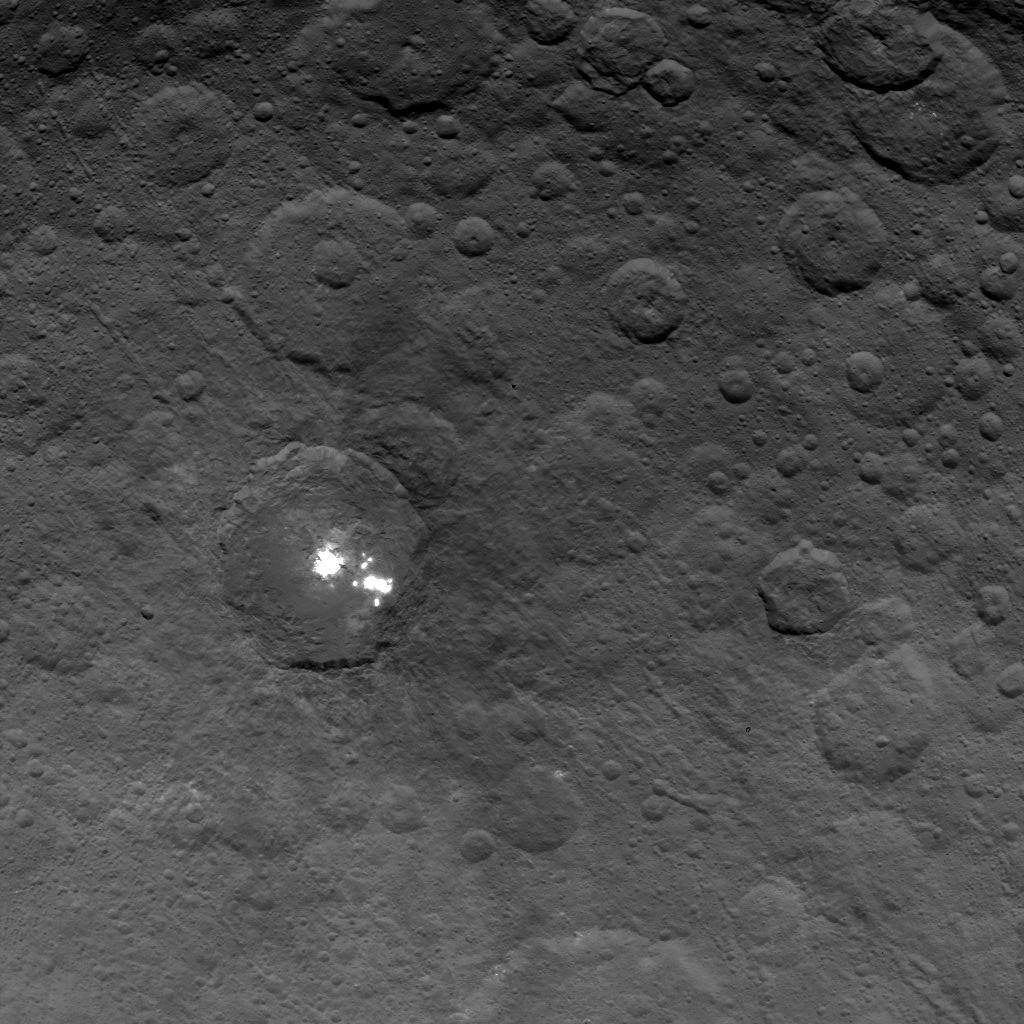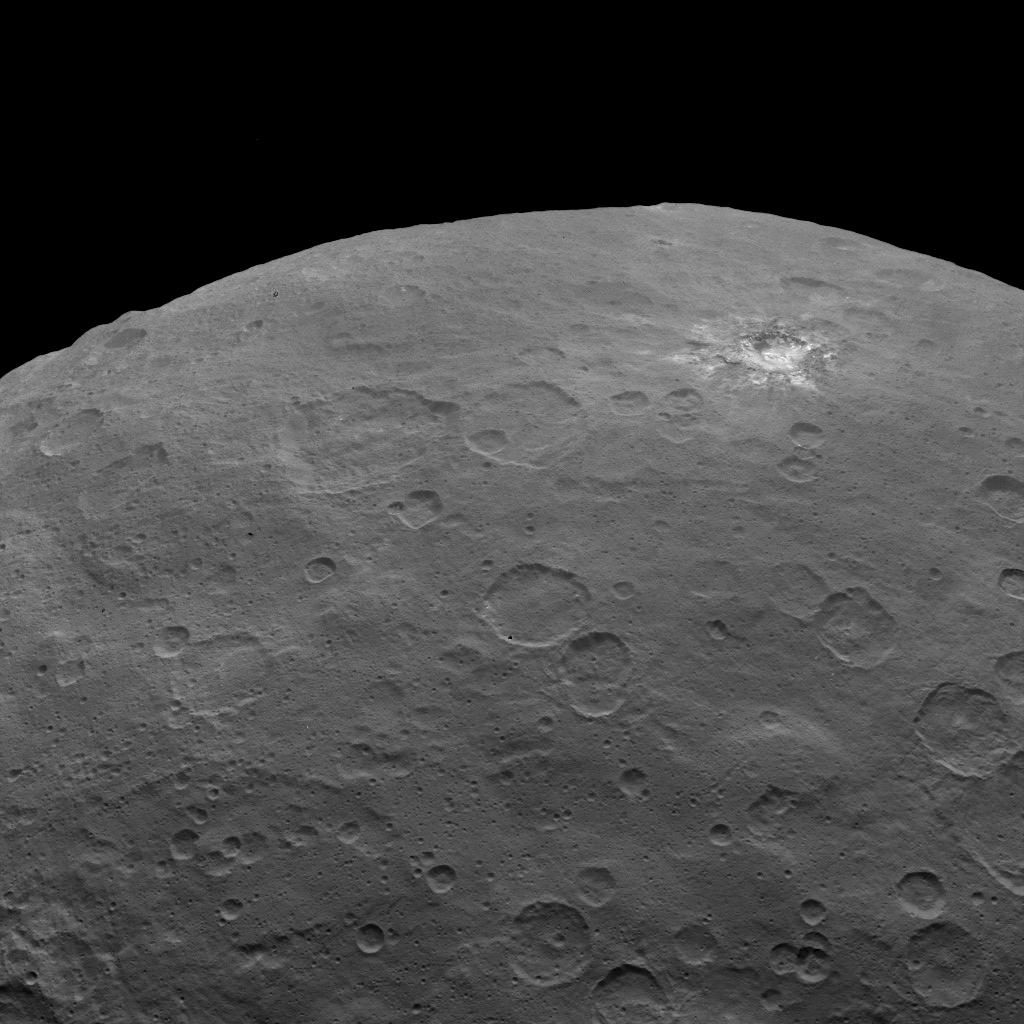Still there, getting closer more spectacular shots. eg.
Here are the mysterious bright spots at best resolution so far. Are they salt or ice?

More images:


Still there, getting closer more spectacular shots. eg.
Here are the mysterious bright spots at best resolution so far. Are they salt or ice?

More images:


(Darn it, the last one was supposed to be a different image, try again). A few strange features here.

The limpet-shaped feature in the last photograph above is actually a mountain 5 km high, making it about 55% of the height of Mt Everest on Earth.
mollwollfumble said:
The limpet-shaped feature in the last photograph above is actually a mountain 5 km high, making it about 55% of the height of Mt Everest on Earth.
Looks very volcanic.
A few more white spots appearing around the place.
This is a great year for solar system exploration
dv said:
This is a great year for solar system exploration
We’ve been spoilt over the last decade or so, so many probes and landers all over the solar system, well done to the human race for its effort.
Can you point out the “strange features”? To my eye it looks exactly like you would expect a large ball of rock in space to look like…
furious said:
- A few strange features here.
Can you point out the “strange features”? To my eye it looks exactly like you would expect a large ball of rock in space to look like…
What could be strange? Which other comet has been photographed to compare it with?
roughbarked said:
furious said:
- A few strange features here.
Can you point out the “strange features”? To my eye it looks exactly like you would expect a large ball of rock in space to look like…
What could be strange? Which other comet has been photographed to compare it with?
oops, which other rock in space?
furious said:
- A few strange features here.
Can you point out the “strange features”? To my eye it looks exactly like you would expect a large ball of rock in space to look like…
There are bright spots in several places on both pictures, with bright regions around several craters, and what appears to be a pimple on the second; as Moll says, the “pimple” is a mountain 5 km high.
furious said:
- A few strange features here.
Can you point out the “strange features”? To my eye it looks exactly like you would expect a large ball of rock in space to look like…
There was a man associated with the Apollo program, let’s see if I can remember his name, not at the moment. Anyway, he became famous for covering the Apollo briefing room with the maximum resolution Moon images available, and pointing out dozens of strange features on those images that nobody had noticed before, because nobody before him had really looked. He became a major geology teacher to the Apollo program, taking the astronauts out on geology field trips to the local deserts.
mollwollfumble said:
Still there, getting closer more spectacular shots. eg.Here are the mysterious bright spots at best resolution so far. Are they salt or ice?
This new image of the brightest spots taken at the same distance is deliberately under-exposed. See how the second-brightest spots are nowhere near as bright as that single brightest spot in the crater centre.

June 22, 2015 – Mapping of Ceres Continuing Smoothly
On June 20, Dawn completed transmitting the results of its fifth set of observations. After 10:00 PM PDT that day, it traveled once again 2,700 miles (4,400 kilometers) over the terminator from the night side to the day side of Ceres. The probe is now collecting more pictures and spectra in infrared and visible. After its orbit takes it to the dark side later today, it will turn to point its main antenna to Earth to relay its latest results.
June 18, 2015 – Dawn Now in Second Half of Second Mapping Phase
Dawn is now on its fifth flight over the sunlit side of Ceres in this phase of the mission. It is operating well as it takes more pictures and spectral measurements. The explorer will continue its observations until tomorrow morning when it will pass over the south pole. Then when it flies once again over the unilluminated side, it will send the data to Earth.
During the fourth observing period on June 15, the visible and infrared mapping spectrometer’s internal computer detected an unexpected condition and stopped collecting data. The main spacecraft computer then powered the device off. The same events occurred in 2011 as Dawn was approaching Vesta. This time, as was the case four years ago, engineers and scientists concluded that the most likely cause was a cosmic ray strike. When it was powered back on for the fifth observing cycle, the spectrometer resumed normal operation.
Navigators are continuing to refine their measurements of Ceres’ gravity as they track Dawn’s orbital motion, and they are now using the results to design the next spiral maneuvers with the ion propulsion system. The spacecraft is scheduled to begin lowering its orbital altitude at the end of this month following the conclusion of its eighth revolution.
A few more images, mostly of craters. This is the most interesting. “This image, taken by NASA’s Dawn spacecraft, shows dwarf planet Ceres from an altitude of 2,700 miles (4,400 kilometers). The image, with a resolution of 1,400 feet (410 meters) per pixel, was taken on June 9, 2015.”
